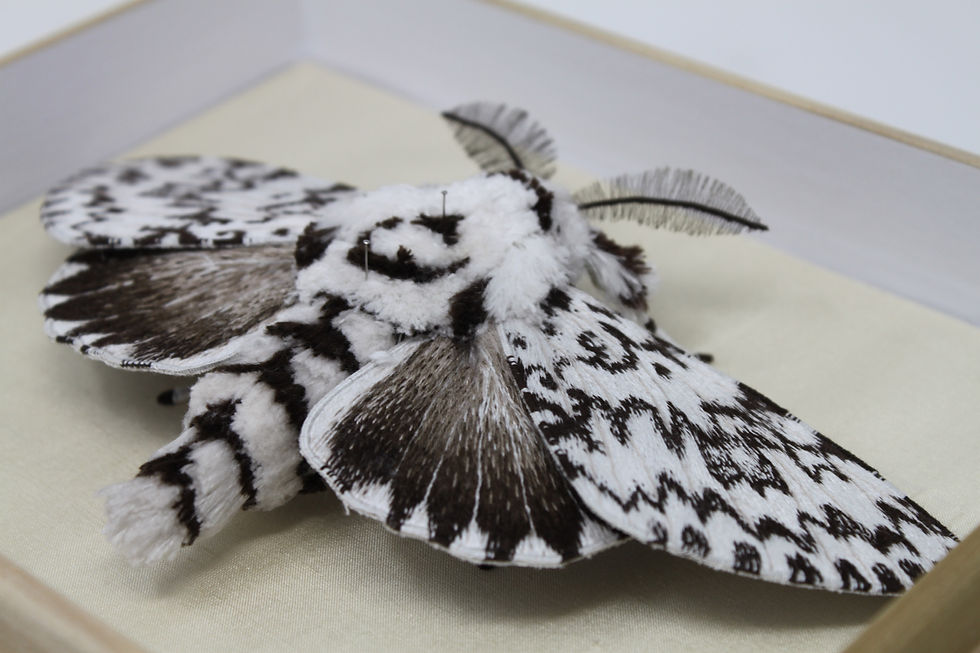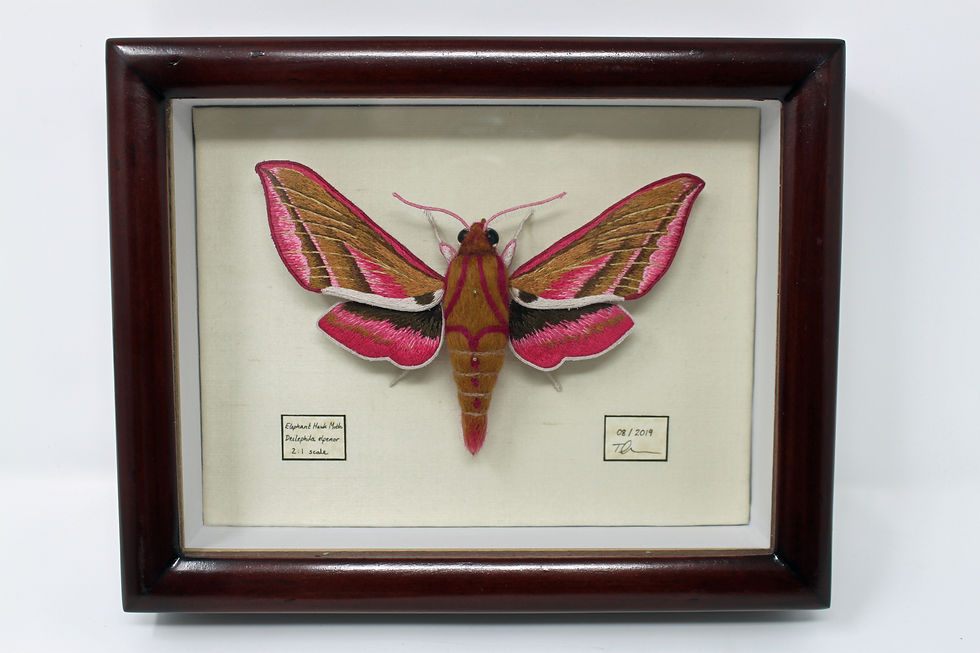Embroidering Ecosystems
- Tzipporah Johnston

- Oct 19, 2022
- 3 min read
Over the next month, I'm going to be writing a bit about the pieces I currently have on show at the Nature/Nurture exhibition at the Leyden Gallery in London. In this third post, I'm discussing the embroidered butterflies and Black Arches Moth.

When I showed my embroidered butterflies at my first ever exhibition, a tiny group show in my friend's living room, they were very well received until one lady started telling me off for cruelty to animals - she thought they were real. I still laugh a little when I think about it. But it also makes me sad, because the only reason you could mistake these for actual butterflies, at least at close quarters, is that you seldom encounter the real thing. If you are familiar with the ethereality of the real deal, thread and gauze can only ever seem clunky in comparison. Her confusion drove home the dire extent of the insect catastrophe we are all living through, and how divorced from nature people have become. It provided a new motivation for my work – getting people to care about insects.
It's not an exaggeration to say that we are facing an insect apocalypse. Insect populations have declined 75% in the last 50 years. Both here in the UK and globally, we are destroying irreplaceable habitats at a stunning rate, disrupting delicate ecosystems through climate change, and poisoning the earth with pesticides and microplastics. We rely on invertebrates to do just about everything in the natural world - to pollinate our crops, break down dung and detritus, dispose of dead bodies, and keep the soil healthy and fertile. The entire food chain depends on them – no insects means no birds, reptiles, mammals or amphibians. A barren, dead world, one incompatible with life.
I find it difficult to understand other people’s complacency on this. Once you’ve seen what’s happening you do start to wonder how everyone else isn’t equally anxious. But insects have quite a bad rep. People

think of them as causes of disease rather than preventers, as gross or polluting. It’s difficult to get people to care about them. There is also something about insect minds that feels very alien. It’s easier to empathize with a mammal, because their minds feel closer to ours. But understanding what it’s like to be an ant, or a termite, just one hundred-thousandth part of a sprawling collective consciousness? Where do you even begin?
I think part of it is just getting people to actually notice invertebrates, because once you start to notice them you can’t help but be amazed. For me, the more ‘charismatic’ insects - butterflies, bees - offer a way for people to start thinking about the issue. Draw people in, get them to stop and experience a sense of wonder, and perhaps that will spark a broader re-evaluation.
This desire was behind my large scale moths, one of which is on display at the Leyden Gallery this month. Moths are often unfairly maligned, inspiring revulsion or viewed as pests. In fact, our ecosystem depends upon them both as pollinators and food for other animals. Their sensitivity makes them important indicator species, warning us of environmental threats. We are also indebted to moths for many scientific discoveries, from understanding Rh disease to breaking down plastic.
By creating large-scale specimens, several times actual size, I encourage people to look again, and more favourably, at moths. Enlarged, their beauty becomes more striking, the diversity of species more evident. By kindling a sense of awe, I hope to inspire people to value and protect these remarkable insects.



Comments